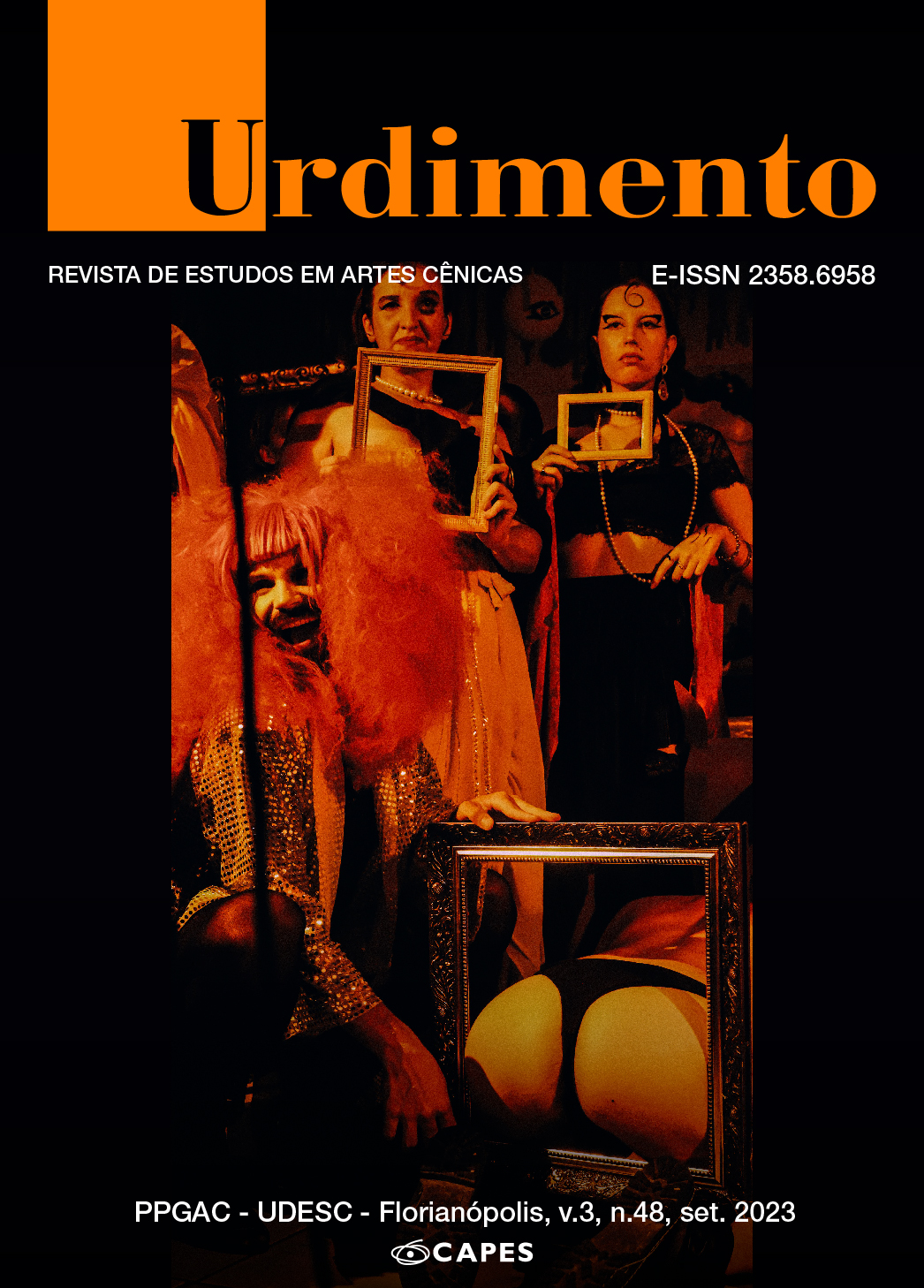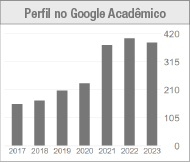Atlas Coreodramatúrgico: constelações de imagens como método de criação em dança
DOI:
https://doi.org/10.5965/1414573103482023e0108Palavras-chave:
imagem, dança Butô, processo criativo, estética, montagemResumo
A presente proposta metodológica de criação coreodramatúrgica fundamentou-se em um uso crítico e negativo da imagem, tendo como disparadores a poética e os procedimentos utilizados pelo criador da dança Butô, Tatsumi Hijikata, e suas potenciais intersecções com o universo da filosofia da imagem, principalmente com as contribuições de pensadores como Didi-Huberman, Aby Warburg e Georges Bataille. Esta pesquisa teve início em um período de pós-doutoramento e gradualmente vem ganhando diferentes camadas materiais na medida em que seus procedimentos criativos vêm sendo atualizados em diversos contextos pedagógicos e artísticos. São apresentados aqui, portanto, alguns princípios de suas bases conceituais e relatadas experiências práticas de criação nas quais o Atlas Coreodramatúrgico (ACD) foi aplicado e complexificado nos últimos anos, tanto em disciplinas de graduação e pós-graduação, como no processo de criação de um grupo universitário de pesquisa artística.
Downloads
Referências
BURCKHARDT, Jacob. A cultura do Renascimento na Itália. Um ensaio. São Paulo: Cia. das Letras, 2003.
CENTONZE, Katja. Aspects of Subjective, Ethnic and Universal Memory. In Ankoku Butō, “Asiatica Venetiana”, 8/9, Venezia, 2003/2004, p. 21-36.
DIDI-HUBERMAN, Georges. Phasmes: Essais sur l'apparition. Paris: Le Éditions de Minuit, 1998, p.113-120. Trad. Daisy Turrer e Iara Ribeiro.
DIDI-HUBERMAN, Georges. A imagem sobrevivente: história da arte e tempo dos fantasmas segundo Aby Warburg. Rio de Janeiro: Contraponto, 2013a.
DIDI-HUBERMAN, Georges. A semelhança informe ou o gaio saber visual segundo Georges Bataille. Rio de Janeiro: Contraponto, 2015.
DIDI-HUBERMAN, Georges. Atlas ou o Gaio Saber Inquieto: o Olho da História III. Belo Horizonte: Editora UFMG, 2018.
KUNIYOSHI, Kazuko. La notazione butoh come crogiolo della creazione: le note coreografiche di Tatsumi Hijikata. In Biblioteca Teatrale (BT), Ritorno a Hijikata: il Butō e la danza moderna nel XX secolo, n. 79-80, Salerno, Giorgio (org.), 2006 (Revista trimestral de estudos e pesquisas sobre o espetáculo).
MADUREIRA, Rafael; YONASHIRO, Andreia. Joana Lopes e a coreodramaturgia: diálogos entre o jogo dramático e a arte do movimento de Rudolf Laban. Cena, Porto Alegre, n. 32, p. 246–258, 2020. DOI: 10.22456/2236-3254.104330. Disponível em: https://seer.ufrgs.br/ index.php/cena/article/view/104330 . Acesso em: 30 maio 2022.
MICHAUD, Philippe-Alain. Aby Warburg e a imagem em movimento. Rio de Janeiro: Contraponto, 2013.
NARBY, Jeremy. A serpente cósmica: o DNA e a origem do saber. Rio de Janeiro: Dantes, 2018.
NIETZSCHE, Friedrich. O nascimento da tragédia. São Paulo: Companhia de bolso, 2007.
PERETTA, Éden. O soldado nu: raízes da dança butô. São Paulo: Perspectiva, 2015.
PERETTA, Éden. A dança entre a carne e a palavra. In OHNO, Kazuo. Treino e(m) Poema. São Paulo: n-1 Edições, 2016.
PERETTA, Éden. Corpos possíveis. II Série especial de ensaios. Japan Foundation, 2022. Disponível em: https://fjsp.org.br/estudos-japoneses/wp-content/uploads/sites/ 3/2022/03/ peretta-eden-corpos-possiveis.pdf . Acesso em: 16 ago. 2022.
REBECCHI, Marie. Cosa significa "conoscere attraverso il montaggio": Intervista a Georges Didi-Huberman. In Giornale di Filosofia, 2010. Disponível em www.giornaledifilosofia.net/public/scheda.php ?id=140
TAKASHI, Morishita. Hijikata Tatsumi notational butoh: an innovational method for butoh creation. Tokyo: Keio University Art Center, 2015.
TEIXEIRA, Felipe. Aby Warburg e a pós-vida das Pathosformeln antigas. In História da historiografia, Ouro Preto, nº 05, setembro de 2010, p. 134-147.
The Drama Review (TDR). Hijikata Tatsumi: The Words of Butoh, 1, vol. 44, (T165), Kurihara, Nanako (org.), Spring, 2000.
UNO, Kuniichi. Tatsumi Hijikata: pensar um corpo esgotado. São Paulo: n-1 edições, 2018.
Publicado
Como Citar
Edição
Seção
Licença
Copyright (c) 2023 Urdimento: Revista de Estudos em Artes Cênicas

Este trabalho está licenciado sob uma licença Creative Commons Attribution 4.0 International License.
Declaração de Direito Autoral
Os leitores são livres para transferir, imprimir e utilizar os artigos publicados na Revista, desde que haja sempre menção explícita ao(s) autor (es) e à Urdimentoe que não haja qualquer alteração no trabalho original. Qualquer outro uso dos textos precisa ser aprovado pelo(s) autor (es) e pela Revista. Ao submeter um artigo à Urdimento e tê-lo aprovado os autores concordam em ceder, sem remuneração, os seguintes direitos à Revista: os direitos de primeira publicação e a permissão para que a Revista redistribua esse artigo e seus meta dados aos serviços de indexação e referência que seus editores julguem apropriados.
Este periódico utiliza uma Licença de Atribuição Creative Commons– (CC BY 4.0)




